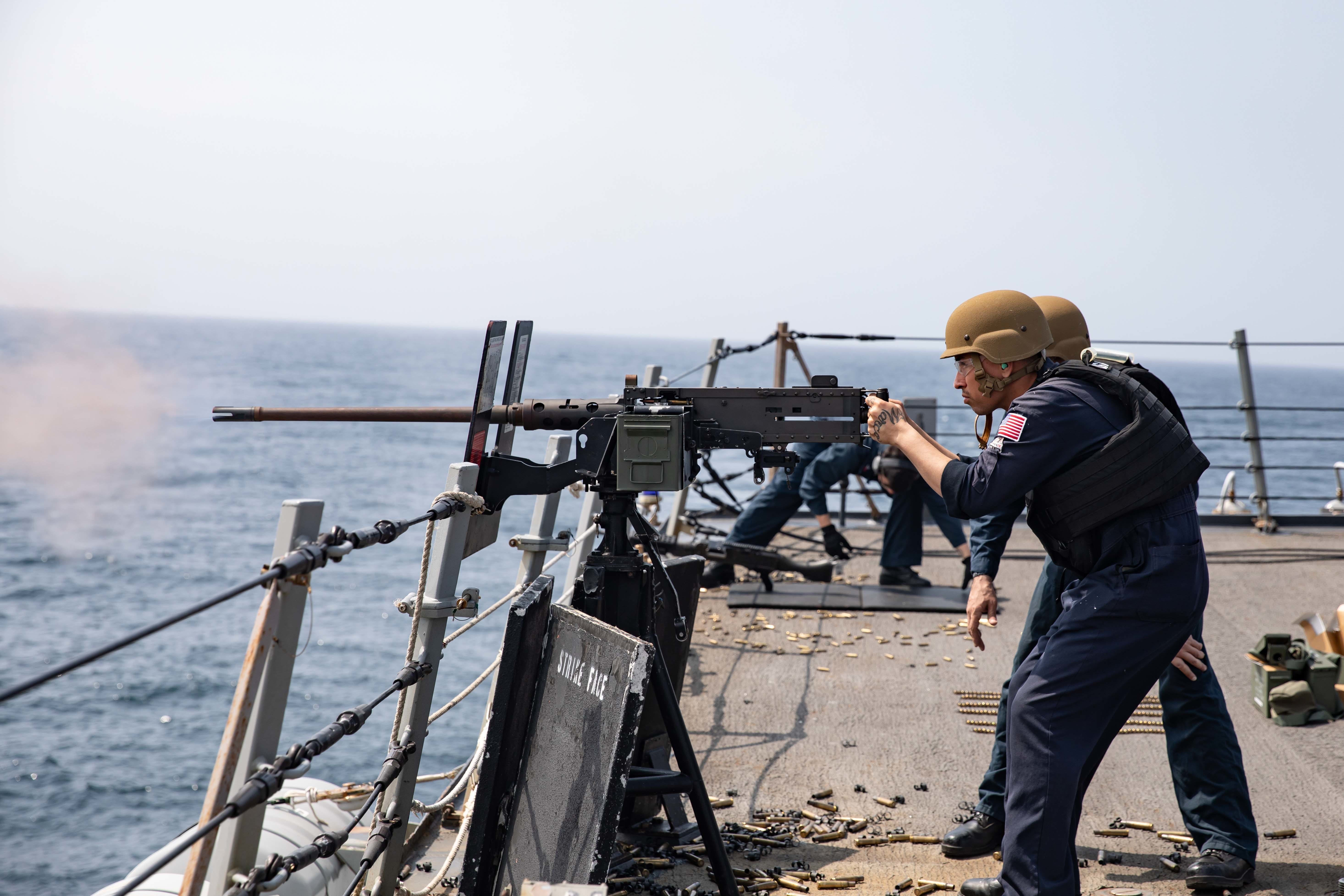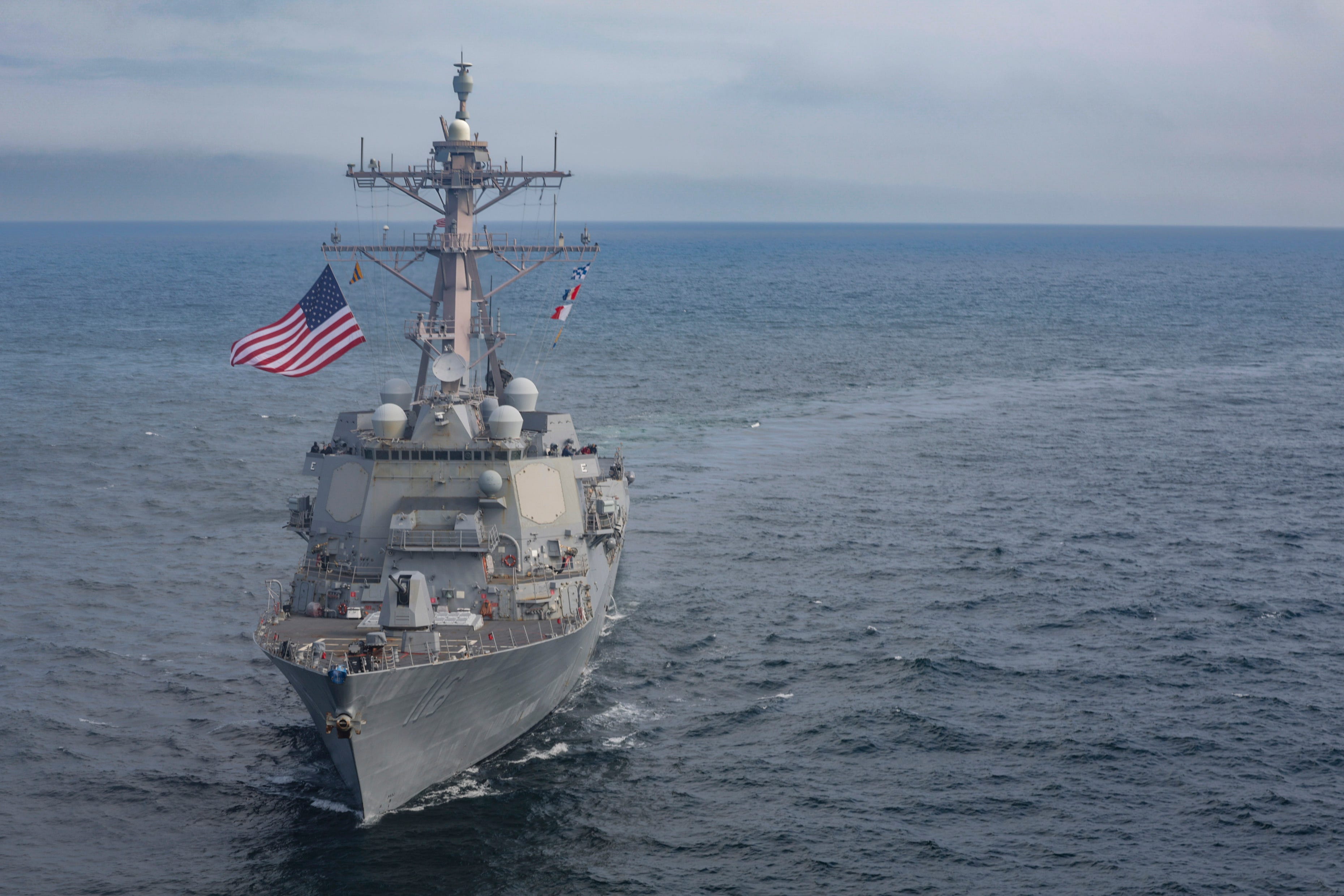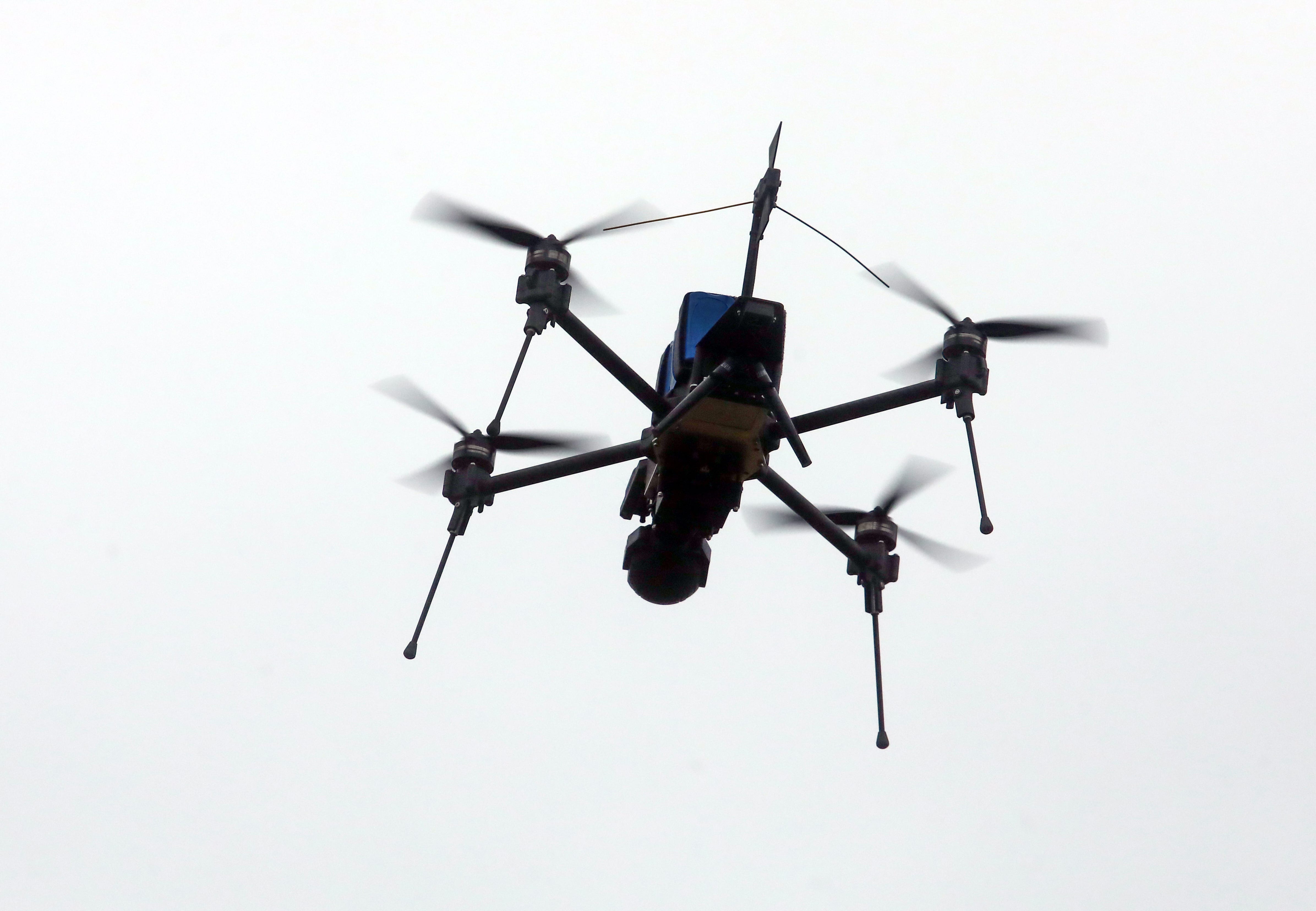
US Navy photo by Mass Communication Specialist 3rd Class Chelsea Palmer/Released
Petty Officer Second Class Brian Diaz saw the small drone coming in through his binoculars. The US Navy sailor quickly called in the threat and got the go-ahead to open fire on it with his deck-mounted M2 Browning .50 caliber machine gun.
A hundred rounds went out in a flash. They found their target, and Diaz, a gunner’s mate, scored a direct hit on the drone, sending it crashing into the chilly Atlantic waters below. Sailors on the Arleigh Burke-class destroyer USS Thomas Hudner erupted in cheers.
The drone that Diaz shot down with his machine gun did not belong to a real enemy, but the exercise was serious all the same, simulating a threat that warships like the Thomas Hudner could face in the future, as drones are finding a greater role in naval warfare.
“Being able to go through the motions just gives me peace of mind, that I know I can do it, come the need to do it,” Diaz shared with Business Insider during a recent visit to Thomas Hudner that came on the heels of the warship’s participation in NATO’s Formidable Shield 25 exercise last month.
Formidable Shield is Europe’s largest live-fire naval exercise and a key opportunity for allies to train for a variety of air defense scenarios. For the Thomas Hunder, the drills included missile and drone engagements.

US Navy photo by Mass Communication Specialist 2nd Class Jonathan Nye
One day, toward the end of the exercise, a handful of NATO warships lined up to face off against different defense scenarios. Diaz was on watch with the .50 caliber, looking out over the water and waiting for instructions to come through on the radio.
Diaz said that his first engagement that day was a remote-controlled boat, simulating an uncrewed surface vessel. It was pretty far out, and he could barely see it. Thomas Hunder engaged with all its weapons systems: the large five-inch deck gun, the Mark 38 machine gun system, and the .50 caliber. Eventually, the five-inch gun hit it.
It was later that day that he fought the flying drone, a small quadcopter system. Other warships called in the threat to Thomas Hunder. Diaz recalled that he couldn’t see it at first, but eventually, the team spotted the threat and marked it as a contact.
The drone started to get closer, at one point 200 meters (650 feet) out, getting well within range of the .50 caliber. Diaz asked for permission from a superior to engage the drone before opening fire alongside another sailor operating a second M2 Browning.
“We’re both shooting,” Diaz said. “Boom, boom, boom, boom, boom.”

US Navy photo by Mass Communication Specialist 1st Class Hannah Fry
At one point, the other sailor paused to reload. That’s when Diaz made the kill.
“I think I shot the wing off,” Diaz said. “What it does is, it’s flying, and it’s just sitting there, and it just — donk!” he explained. “There’s a little sway, and it’s straight into the water.”
Drones of this size, often just a few inches or a foot in length, are incredibly difficult to shoot down because they’re so small and can move erratically in the air. Diaz said he was nervous during the engagement, but the successful hit got the crew fired up.
Cdr. Cameron Ingram, Thomas Hunder’s commanding officer, told BI that some of the crewmembers were watching Diaz from the bridge wing at the time, wondering whether he would be able to take down the drone.
“And then he clips it, and it falls,” Ingram said. “The whole bridge wing explodes with excitement,” he said, noting that the sailor “walks a step taller now.”
The exercise underscores how the US Navy is increasingly integrating counter-drone training into its planning as it absorbs lessons from the Red Sea conflict, during which the Iran-backed Houthis in Yemen regularly launched drones and missiles at military and civilian vessels operating in the area.

Photo by Ukrinform/Ukrinform/Sipa USA
The Houthis relied heavily on one-way attack drones like the KAS-04, or Sammad. This fixed-wing drone, which is packed with explosives and can fly long distances, is much larger than a cheap, commercially available quadcopter drone but significantly smaller than a US military MQ-9 Reaper, a well-known combat drone.
US warships, including Thomas Hunder, shot down Houthi KAS-04s. The ships weren’t known to have battled any Houthi quadcopters; these threats, however, are something the Navy is training for, especially considering their proliferation in other fights.
During BI’s visit to the Thomas Hudner, which sailed from England to France last weekend ahead of the D-Day events this week, the watch team spotted a quadcopter drone as the destroyer was setting off on its journey. They closely monitored the drone, which turned out not to pose any immediate danger to the ship. Still, the crew was ready to take action if needed.
Ingram said that small quadcopters are “absolutely a threat,” even if there are limitations in their capability, specifically endurance, range, and payload capacity. While these drones generally can’t carry enough ordnance to effectively disable a destroyer, they could certainly hurt people and do enough damage to potentially force the warship into repairs.
“I think there will probably be a desire to weaponize those things, but there are limitations,” Ingram said.
Destroyers like his don’t operate close to the coast. An enemy would have to send the drones out several miles from the shore or have a launching platform closer to the warship. But even then, the payload wouldn’t be as heavy as a Houthi KAS-04. It is possible that the ship could encounter one near port. Warships have been attacked pierside in the past, though by other threats.
The Ukraine war has demonstrated the effectiveness of quadcopters, small, inexpensive first-person view (FPV) drones, in combat. They are mostly used in engagements on land, but Kyiv has at times integrated these drones into maritime operations, demonstrating that it’s still possible to burden a naval force even if the desired target isn’t necessarily an expensive warship.
The post A US Navy sailor walked BI through what it was like shooting down a small drone with a .50 caliber machine gun appeared first on Business Insider.




